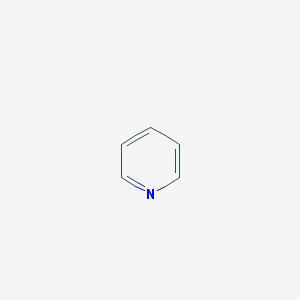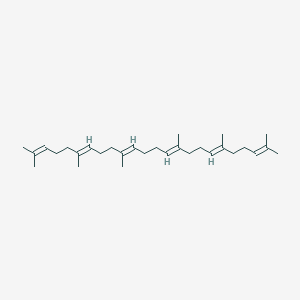-
Categories
-
Pharmaceutical Intermediates
-
Active Pharmaceutical Ingredients
-
Food Additives
- Industrial Coatings
- Agrochemicals
- Dyes and Pigments
- Surfactant
- Flavors and Fragrances
- Chemical Reagents
- Catalyst and Auxiliary
- Natural Products
- Inorganic Chemistry
-
Organic Chemistry
-
Biochemical Engineering
- Analytical Chemistry
- Cosmetic Ingredient
-
Pharmaceutical Intermediates
Promotion
ECHEMI Mall
Wholesale
Weekly Price
Exhibition
News
-
Trade Service
The brain is the most elusive organ in the body, there is no one
.
Data show that the brains of primates have approximately 86 billion neurons and a comparable number of non-neuronal cells
However, technological advances are accelerating the pace of research, helping researchers to uncover the mechanisms of neurodegenerative diseases, including amyotrophic lateral sclerosis (ALS), Alzheimer’s disease (AD), Parkinson’s disease (PD) and Huntington's disease
.
Some of the technologies shown below are helping people uncover the molecular and cellular mechanisms of neurodegenerative diseases
Listen to the conversation of neurons
To study how neurons communicate, scientists need a technique to listen to their conversations
.
Axion Biosystems' Maestro platform can monitor the electrical activity of a group of neurons through a porous microelectrode array (MEA) plate
Steven Fiene, a scientific liaison at Axion Biosystems, said: "These electrodes have the sensitivity to detect the firing of a single neuron, but because there are multiple electrodes in each hole measuring at the same time, the activity of the neural network can be quantified
.
"
The Maestro platform is suitable for most types of neuron culture (2D or 3D).
It not only supports short-term experiments, but also supports long-term research because it integrates an environmental control system
.
"Although it is very good at detecting acute reactions, what really makes it stand out is the ability to study neuronal networks over a period of time," Fiene said
For example, at the Scripps Research Institute, staff in the Stuart Lipton laboratory use the Maestro platform to monitor electrical activity in 2D and 3D "mini brain" models.
The neurons in these models are derived from wild-type iPSCs or contain AD.
Related mutations in iPSC
.
2 "They can mimic the phenotype of electrical hyperexcitability and hypersynchronization in neurological diseases, a feature that can lead to synaptic damage in Alzheimer's disease," Fiene said
The research team led by Stuart Lipton showed that the NMDA receptor antagonist NitroSynapsin reduced the increase in electrical activity in mini brains with AD mutations
.
They believe that using this model system can screen out some drugs that are expected to treat nerve hyperexcitability and prevent damage, thereby treating Alzheimer's disease
The power of a single cell
Tools for exploring individual cells are also helping researchers discover the mechanisms of neurodegenerative diseases
.
10x Genomics' Chromium single-cell gene expression tool series include Chromium single-cell gene expression analysis, Chromium single-cell ATAC analysis, and Chromium single-cell multi-omics ATAC + gene expression analysis
Kelly Miller, senior manager of the neuroscience market development department at 10x Genomics, said: “With multi-omics analysis, scientists can simultaneously capture transcriptome and epigenetic information from the same cell, thereby detecting rare cells more accurately and saving valuable Time and samples
.
These tools help us understand what specific role each cell in the brain plays in the progression of degenerative diseases
.
"
The Vivek Swarup team at the University of California, Irvine, used 10x Genomics tools to perform single-core ATAC sequencing and RNA sequencing on the brain tissue of human advanced AD
.
3 This combined method shows which genes are being transcribed and their chromatin openness
.
In this way, the Swarup team determined cell-type-specific gene expression changes and associated AD-related cis-regulatory elements with their target genes
.
With the help of 10x Genomics multi-omics tools, researchers can perform multi-omics analysis on the same sample in the same process and correlate RNA and ATAC sequencing data
.
"Facts have proved that this method can effectively fill the gap and help people understand how known pathogenic variants cause disease," Miller said
.
In addition, the Visium platform of 10x Genomics can perform spatial transcriptome analysis on tissue slices to support further research on neurodegeneration
.
Visium spatial gene expression analysis can reveal cell-cell interactions and brain regions related to neurodegenerative diseases
.
The newly launched Visium FFPE analysis supports the study of FFPE brain samples
.
In 2022, 10x Genomics also plans to release more multi-omics tools to support multiple analysis of spatial protein and full-transcriptome gene expression
.
Miller said that the company will also launch Visium HD, "to achieve single-cell resolution full transcriptome spatial analysis, to promote people's in-depth understanding of the underlying mechanisms of neurodegenerative diseases
.
"
Other factors involved in neurodegeneration
People continue to study the protective mechanisms of the brain and how these mechanisms interact with the environment to resist diseases
.
For example, although there is an association between neurodegeneration and herpes simplex virus type 1 (HSV-1) infection, the specific mechanism is still unclear, and not every infected person will develop a neurodegenerative disease
.
Previous studies have shown that the autophagy receptor protein optineurin can play a phagocytic effect, recovering proteins and damaged organelles
.
So, the Deepak Shukla team at the University of Illinois at Chicago investigated whether optineurin might play a similar role in virus degradation
.
4
They found that optineurin selectively targets HSV-1 for degradation
.
The researchers prepared mice deficient in the optineurin gene and infected them with HSV-1
.
They observed that mice lacking optineurin showed more virus and neuronal death in autopsy brain tissue than controls
.
"The optineurin defect alone is not enough to cause neurodegeneration," Shukla said
.
"Other things need to go wrong, such as HSV-1 infection
.
"
Shukla's team proposed that neurodegeneration requires both HSV-1 infection and optineurin dysfunction (caused by mutation or deletion)
.
In other words, optineurin usually plays a protective role in the brain.
After its dysfunction, neurons are more susceptible to virus attack
.
"During HSV-1 infection, optineurin consciously recovers viral proteins, thereby reducing viral load and protecting cells from death," Shukla said
.
"When it fails to function properly, damaged proteins accumulate and accelerate the death of infected neurons
.
"
The researchers also observed that mice lacking optineurin and infected with HSV-1 showed obvious neurocognitive deficits after a period of time
.
Previous studies on optineurin have shown that it plays an important role in amyotrophic lateral sclerosis, Huntington's disease and Alzheimer's disease
.
Today, identifying multiple factors that contribute to neurodegeneration can help people understand how other neurodegenerative diseases progress and develop potential treatment options
.
references
1.
Herculano-Houzel, S.
The remarkable, yet not extraordinary, human brain as a scaled-up primate brain and its associated cost.
PNAS June 2012.
109 (Supplement 1).
10661-10668
2.
Ghatak, S.
, Dolatabadi , N.
, Gao, R.
et al.
NitroSynapsin ameliorates hypersynchronous neural network activity in Alzheimer hiPSC models.
Mol Psychiatry (2020).
3.
Morabito, S.
, Miyoshi, E.
, Michael, N.
et al.
Single-nucleus chromatin accessibility and transcriptomic characterization of Alzheimer's disease.
Nat Genet 53, 1143–1155 (2021).
4.
Ames, J.
, Yadavalli, T.
, Suryawanshi, R.
et al.
OPTN is a host intrinsic restriction factor against neuroinvasive HSV- 1 infection.
Nat Commun 12, 5401 (2021).







